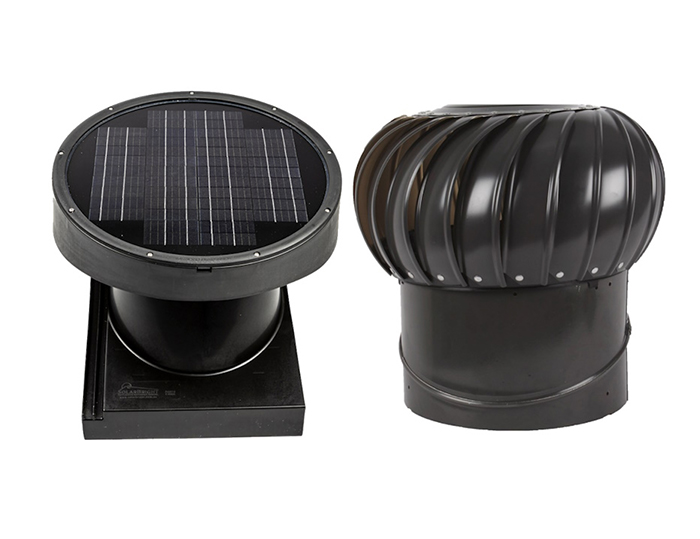News
SolarBright Wins the EUPD Installer Award for 2025 – Our Third Year in a Row
We are proud to announce that SolarBright has been awarded the EUPD Installer Award…

Experience has taught me that good roof ventilation is a key factor in controlling your home’s temperature and helping to lower your electricity bills. Roof ventilation will extract hot air in the summer keeping your roof space cooler and lightening the load on your air conditioner. It also removes moisture from the roof cavity and prevents mould.
When it comes to roof ventilation systems for your home, solar or wind powered are the most sustainable choices. But is one option better than the other? In my experience one works much better than the other.
Let’s compare the two.
When it comes to hardware, solar roof ventilation uses the latest technology. Solar roof ventilation works efficiently, consistently and cost effectively, no matter the time of year. Whirlybirds ventilate your roof cavity passively, meaning they need a windy day to work. On a hot day with no wind, a whirlybird roof vent simply won’t work. This can allow your roof cavity to reach up to 70°c and will have your air conditioner working overtime. On the same day, solar powered roof ventilation will work all day long to extract hot air from your roof and cool your home.
When trying to keep your home warm in cold and windy weather, a whirlybird will spin frantically, sucking all warm air out of your roof. This will have you turning the heater up. But solar powered roof ventilation will turn off on cold, windy days. This ensures that warm air stays in your roof cavity, keeping your home warm.
Both solar and wind roof ventilators rely on natural resources to run, effectively making them free to operate. However, there is a difference in set up costs and maintenance. Being powerful and highly efficient means that solar roof ventilation can achieve 20 times more air changes in your roof cavity than a wind powered whirlybird. Because the whirlybird is less efficient at moving large amounts of air, sometimes more than 10 need to be installed to achieve an adequate air change in your roof. This can make upfront installation costs quite high.
Once installed, solar powered roof ventilation is free to run. Its flexible installation and injection moulded roof flashings make the system is waterproof. Unlike whirlybirds which typically rely on general universal flashings rely on silicon for waterproofing, solar roof ventilation is easy to install and less likely to require maintenance.
When choosing roof ventilation, controlling roof temperature and reducing moisture, are the most important factors. And when choosing between solar powered ventilation or a whirlybird, it’s clear that solar power outperforms wind power. MaxBreeze is the most advanced solar powered rood ventilator in Australia. With advanced technology such as thermostat control and day and night functionality it is the superior choice when choosing roof ventilation. For more information on installing solar roof ventilation, call SolarBright and talk to one of our consultants.
Take a Look
News
We are proud to announce that SolarBright has been awarded the EUPD Installer Award…
Uncategorized
Traditionally skylights have not been recommended for bedrooms as they light up a room…
Solar Battery, Solar Battery Reviews
Solar battery technology continues to advance in Australia. Homeowners and businesses now have several…